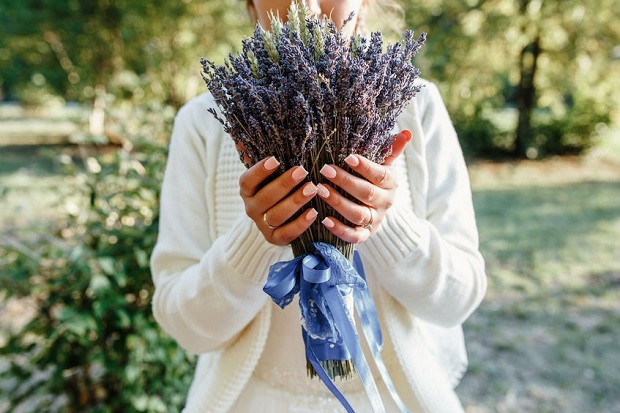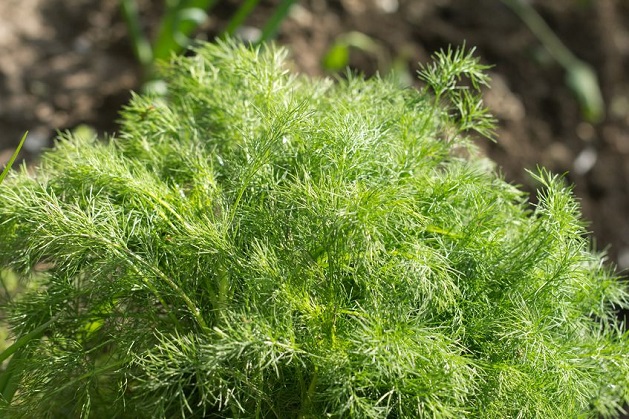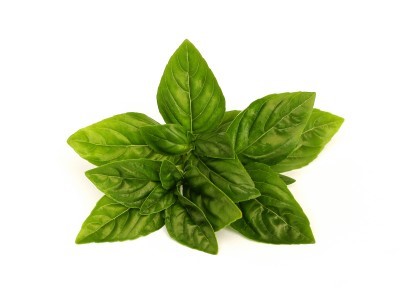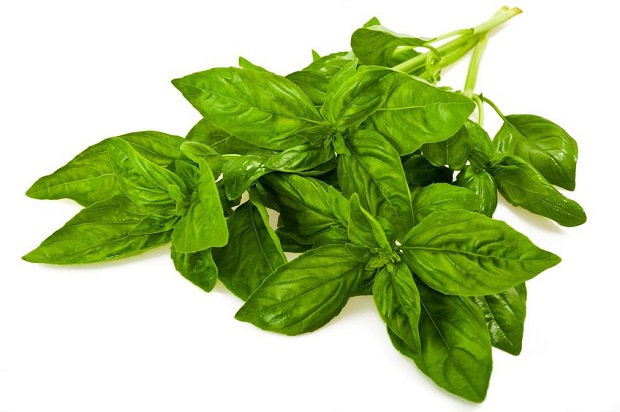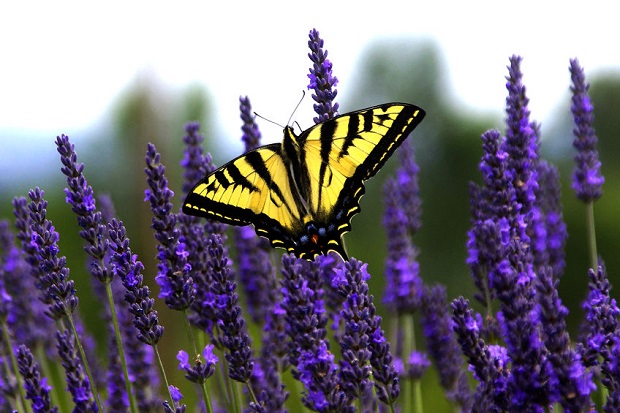
How To Grow Lavender?
Lavender is a perennial with over 100 cultivars that vary in height, spread, and aesthetics. Generally speaking, lavender grows between 1-2’ with a spread of 2-4’ depending on the variety. Flowers are most often showy purple.
Jump Ahead
- Lavender Growth Requirements
- Planting Lavender
- How Often to Water Lavender
- How to Harvest Lavender
- Pruning Lavender
- How to Transplant Lavender
- Can You Grow Lavender Indoors?
- Resources
Lavender Growth Requirements
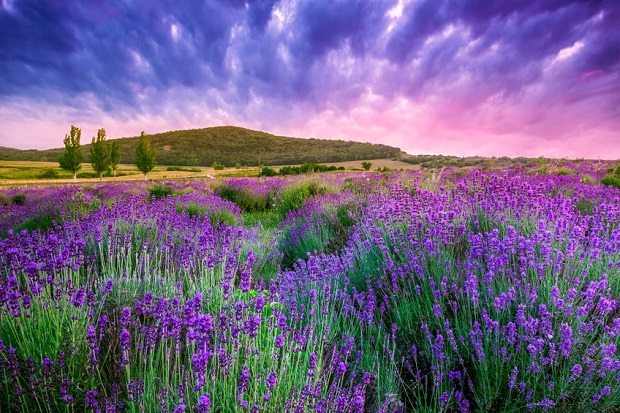
Sun Requirements: Choose a spot for your lavender that receives full, direct sunlight all day. Lavender requires full sun to thrive. It does not flourish even in partial shade.
Soil Moisture Level: Lavender can tolerate droughty soil, but it must be well-drained.
Soil pH: Lavender prefers an alkaline soil of 6.4 to 8.2.
Planting Lavender
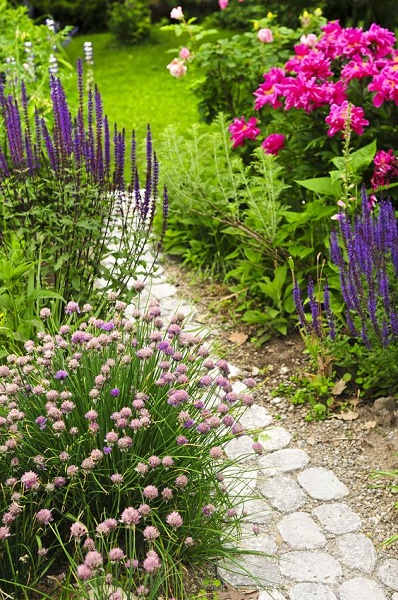
Sowing: Lavender seeds germinate very slowly and require indoor planting before germination. The seeds can take from 1-3 months to germinate. Some cultivars can only be grown through cuttings. For this reason, it is best to purchase lavender plants rather than attempt to grow from seed. Smaller plants can be planted in the spring. If you plan on planting later in the season, the lavender plant should be purchased in a 4” pot or larger to ensure an established root system that will survive the winter.
Spacing: Spacing will depend on the size of the particular cultivar but should allow for 2-4’ between plants and 3-6’ between rows.
How Often to Water Lavender
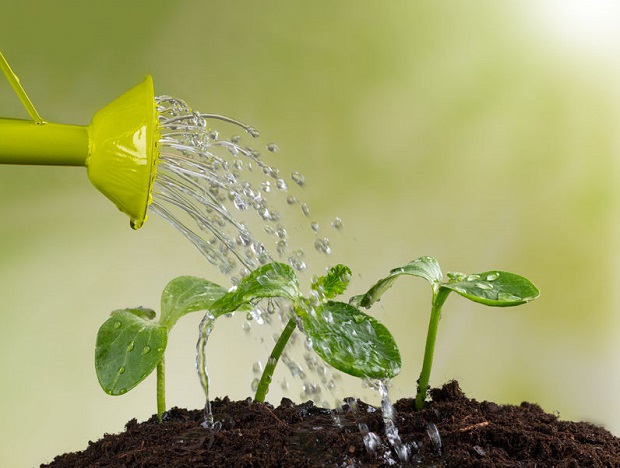
Lavender is drought tolerant, and overwatering can inhibit plant growth. Following planting, water your new plants twice a week until the plants become established. After the plants mature, you need only water them every three weeks until the flower buds form. Once the flower buds form, they will require more frequent watering, once or twice weekly, until you are ready to harvest.
How to Harvest Lavender
Lavender can be harvested yearly, but the plant isn’t fully mature until it is three years old. This is when the plant reaches maximum size and bloom potential. Lavender should be harvested just as the stalk or wand fully blooms. Cut the wands down to where the new growth has started on the woody part of the plant. You get the longest wands this way and have pruned the plant simultaneously.
Cut the wands during the driest part of the day. Any residual moisture on the flowers can result in mold or mildew. Long grass shears make quick work of harvesting, but smaller pruning shears work just as well. You might get a bonus of a second, small burst of bloom after harvesting, but generally, lavender only flowers once a season.
Pruning Lavender
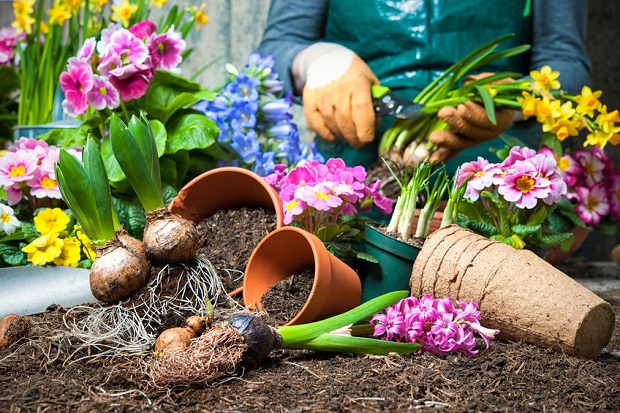
Lavender is a member of the Lamiaceae family and is considered a subshrub, which should be pruned every year after the plant is established. Pruning your lavender once each year will keep it healthy and vigorous. Lavender can be harvested when flower buds are 50 percent open, and stems should be cut during the early morning hours when oils are heavily concentrated.
Avoid pruning lavender during the cool fall and winter temperatures. These plants do best when cut back or pruned during the spring or after the first bloom of the season. Pruning should be done in the spring when leaves begin to emerge from the plant’s base. Light pruning works best on lavender, as many plants lose their vigor and die after especially heavy pruning. Avoid cutting your lavender all the way down to the ground, as this may cause excess plant stress that may kill your plants. When pruning, remove one-third of the top of the plant to keep plants from splitting.
How to Transplant Lavender
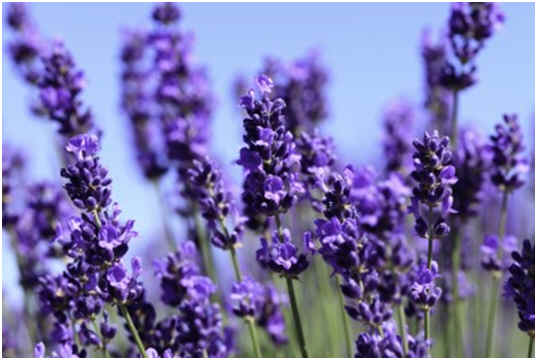
Transplanting lavender in the fall is a perfect time unless you live where there are harsh winters. Then, you would want to transplant the lavender in the spring. Transplanting lavender in the fall gives the plant enough time to establish a strong root system before the summer heat.
Water the lavender plants thoroughly before transplanting. Select the new location for the lavender. Make the hole just as wide and deep as the previous lavender plant hole. Prepare the soil with a cup of bone meal and a cup of compost. If it is a clay soil, mix in sand to loosen up the clay.
Sand should be patted around the bottom of the plant to help with good soil drainage. The sand mulch gives heat to the lavender leaves, stimulating more blossoms.
Newly transplanted lavender plants must be watered regularly, especially with drying winds. The lavender will die without enough moisture. The regular watering will make more spikes, lengthen the stems, and cut out some of the stress of summer.
For the first summer, you need to cut off the spikes so the plant’s energy will flow into the foliage and roots, not the blossoms.
Can You Grow Lavender Indoors?
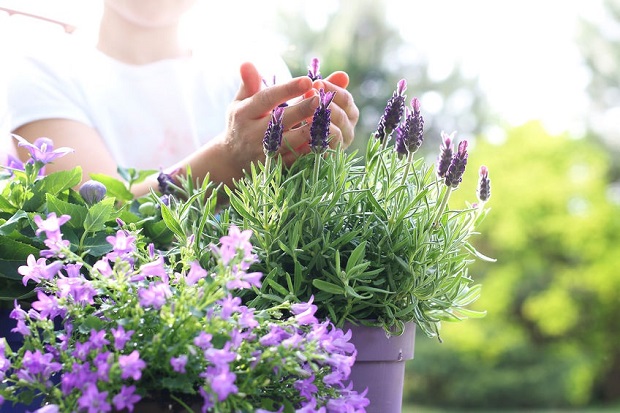
Lavender is an aromatic herb that can be grown indoors under the right conditions. There are different varieties of lavender: Spanish, French, and English. French lavender adapts best to indoor environments. Growing lavender indoors can be problematic due to drier air, temperature fluctuations, and inconsistent lighting conditions. Here are some basic steps to follow to establish the best indoor environment for lavender.
Selecting the plant. The first step is to select a healthy plant. Choose a plant that is healthy in appearance and not root-bound. French lavender requires a good-sized pot for ample growth. The pot should be at least twice the size of the root ball. Prepare the potting soil by mixing in small amounts of lime and sand. Completely water the plant and then allow it to dry out between watering.
Plant location. Make sure the location for your lavender plant has good airflow and sufficient light. This plant requires full sun, so a sunny location is essential. A grow light can be substituted if there is insufficient light. It is important to occasionally turn the plant to achieve even growth on all sides.
Special considerations. During the summer months, lavender should be placed outdoors to increase overall growth and promote plant health. Never place an indoor plant in direct sunlight because this can damage the plant. Place an indoor plant in a protected yet sunny area. Ample care will produce a plant that will flourish and add beauty to the home.
Resources
- UC Master Gardeners – Santa Clara County, CA “Lavender.“
- UC IPM – “Cultural Tips for Growing Lavender.“
- UT Institute of Agriculture – “Lavender – The Useful Plant.“
- Colorado State University Extension – “Growing Lavender in Colorado.”
- OSU Extension Service – “When Is the Best Time to Prune Lavender.“
